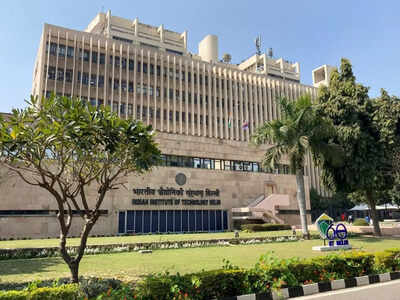
The QS World University Rankings 2026 have reaffirmed India’s growing influence in global higher education. With 54 institutions making it to this year’s list—up from 46 in 2025—India now ranks as the fourth most represented nation, behind only the US, UK, and China.
This unprecedented rise underscores the country’s sustained efforts to internationalise its academic ecosystem and enhance research productivity. At the very forefront of this evolution are two of India’s most celebrated institutions: IIT Delhi and IIT Bombay.Both institutions have been mainstays in international rankings for years. However, in 2026, IIT Delhi has surged to its best-ever rank of 123rd, while IIT Bombay follows closely at 129th.
While they may appear neck and neck at first glance, a deeper dive into their performance metrics reveals distinctive academic identities and strengths.
IIT Delhi vs IIT Bombay: A Parameter-by-parameter breakdown
Here is a deeper look at the comparisons of both the prestigious colleges and how they have performed in the global stage.
| QS Metric (2026) | IIT Delhi | IIT Bombay |
| Global Rank | 123 | 129 |
| Overall Score | 65.5 | 64.8 |
| Academic Reputation | 67.9 | 73.3 |
| Employer Reputation | 95.0 | 96.7 |
| Employment Outcomes | 50.5 | 72.6 |
| Citations per Faculty | 93.1 | 82.9 |
| Faculty-Student Ratio | 21.9 | 16.1 |
| International Faculty Ratio | 3.2% | 6.5% |
| International Student Ratio | 1.9% | 1.6% |
| International Student Diversity | 6.3 | 1.5 |
| International Research Network | 66.9 | 46.6 |
| Sustainability Score | 79.9 | 75.2 |
| Total Students | 11,531 | 13,073 |
| Undergraduate Students | 45% | 48% |
| Postgraduate Students | 55% | 52% |
| International Students (Number) | 136 | 94 |
| UG International Student Ratio | 1% | 1% |
| PG International Student Ratio | 99% | 99% |
| Total Faculty Members | 816 | 772 |
| Domestic Faculty | 97% | 96% |
| International Faculty | 3% | 4% |
Where the differences lie: Academic identity and strengths
While both institutions have effectively upheld the bastion of academic reputation of the country. There are slight differences in the parameters. Take a deeper look at the differences:Reputation among peers and employersIIT Bombay holds a slight edge in academic reputation (73.3) and employer reputation (96.7), underlining its longstanding stature in the academic community and strong ties with industry.
These scores reflect the institute’s deep-rooted alumni networks, cutting-edge programmes, and consistent graduate performance in global job markets.Meanwhile, IIT Delhi, while slightly behind in these two parameters, is not far off. Its academic reputation of 67.9 and employer score of 95 place it comfortably in the upper echelon of global institutions, indicating steady international recognition and growing esteem among hiring organisations.Research strength and global collaborationWhere IIT Delhi clearly pulls ahead is in citations per faculty (93.1)—a metric that reflects research quality and influence. Its score here surpasses that of IIT Bombay (82.9), suggesting a more substantial output of impactful publications. It also outpaces Bombay in international research network strength, scoring 66.9 versus 46.6, indicating more robust and diverse research partnerships worldwide.These indicators position IIT Delhi as a rising research powerhouse, bolstered by its collaborations, interdisciplinary focus, and increased publication visibility.Employability and graduate successOn the other hand, employment outcomes show a stark difference. IIT Bombay scores an impressive 72.6, far ahead of IIT Delhi’s 50.5. This suggests that Bombay graduates are not only sought after by employers but also experience high career mobility and placement rates.
Its strong corporate outreach and industry-integrated education could be contributing factors.Faculty and student profileIIT Bombay boasts a better faculty-student ratio (16.1) compared to IIT Delhi’s 21.9, indicating potentially smaller class sizes and greater faculty engagement. Although both institutes maintain a comparable size of faculty and student populations, this subtle distinction may impact the teaching-learning environment.Faculty diversity, however, remains low at both campuses. IIT Bombay has a marginally higher international faculty ratio (6.5%) than IIT Delhi (3.2%), though both figures remain modest by global standards.Global exposure and student diversityBoth institutions continue to lag in international student representation. IIT Delhi has 136 international students, while Bombay hosts 94. In percentage terms, the international student ratio remains under 2% for both—a reflection of India’s broader struggle with internationalisation.
Additionally, both institutions see almost all their international enrolment at the postgraduate level, with 99% of foreign students pursuing master’s or doctoral degrees.This trend highlights a critical weakness: While academic credentials are strengthening, the appeal to foreign undergraduates remains limited, possibly due to regulatory hurdles, lack of visibility, and insufficient international outreach.
The verdict: A dual narrative of excellence
Both IIT Delhi and IIT Bombay embody the aspirations of a nation rapidly asserting its presence in the global academic arena. IIT Bombay shines in reputation metrics, employability, and teaching environments. It is the preferred choice for students seeking strong industry linkages and proven job market outcomes.Conversely, IIT Delhi is emerging as a research-centric institute, leveraging global collaborations, high-impact publications, and sustainability efforts to drive its growth.
Its surge in the rankings—from 197 in 2024 to 123 in 2026—signals an upward trajectory grounded in academic rigour and global outreach.
Looking ahead: Beyond rankings
While the numbers offer compelling narratives, what they also reveal is a shared need for systemic reform. India’s top institutes must address the pressing issue of internationalisation, improve faculty recruitment, and expand research funding. The journey from global recognition to global leadership will demand more than numbers, it will require institutional vision, policy support, and sustained innovation.
As India cements its place in the top tier of global higher education, IIT Delhi and IIT Bombay will remain the vanguard—not just in rankings, but in reimagining what world-class Indian education can truly become.

 4 hours ago
33
4 hours ago
33




























 English (US)
English (US)